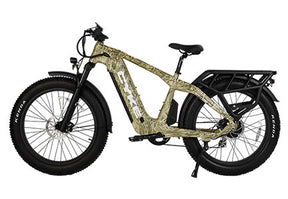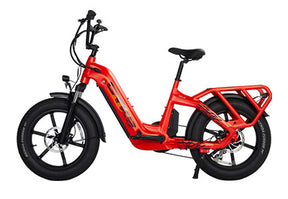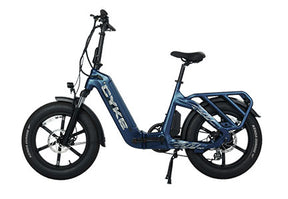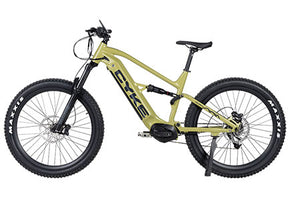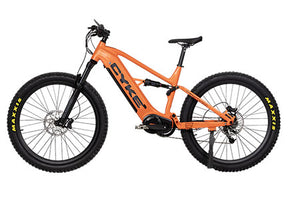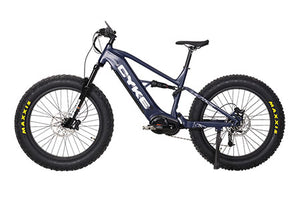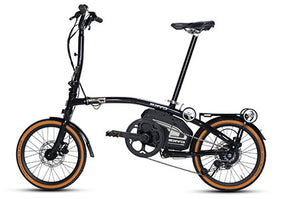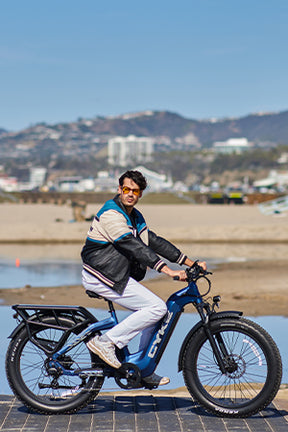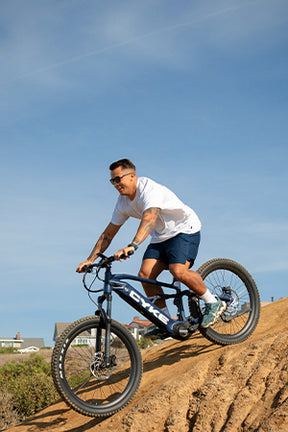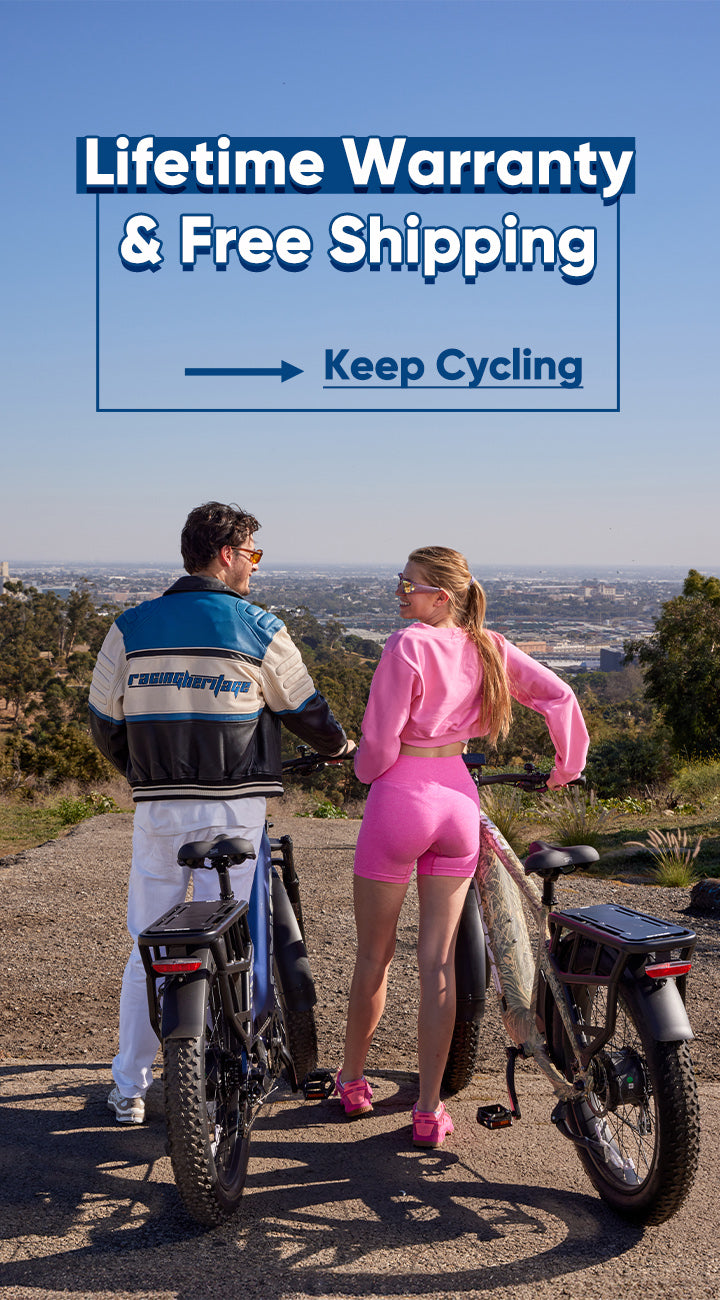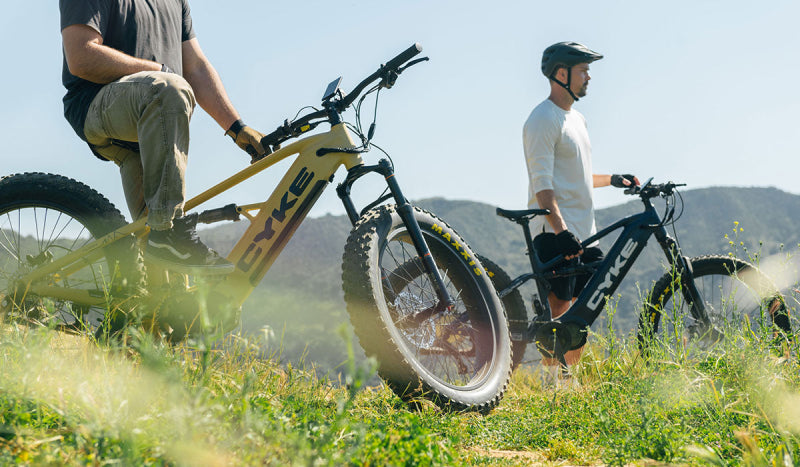Featured in this posts
What Really Affects the Top Speed of an eBike?
Electric bikes are fast, fun, and super practical. But if you have ever asked yourself why one eBike climbs hills so fast while another struggles, the answer comes down to more than just raw motor power.
The ebike top speed typically ranges from 15 to 28 mph (miles per hour). This range is influenced by a mix of mechanical components, electrical systems, and even your surroundings.
In this article, we’ll break down each of the major factors that impact how fast an eBike can go, so you know exactly what to expect from your ride.
Motor Power & Type
The motor is the heart of any electric bike that pushes you forward. Naturally, it plays a huge role in determining top speed. Two big things matter here: how powerful the motor is and what kind it is.
Wattage Matters
Motor power is measured in watts. You’ll see eBikes with 250W to 750W for standard models, with higher-end models going up to 1,000 watts or more. More watts usually mean more power, which can lead to higher speeds.
A 250W motor works great for easy rides on flat ground. But if you are climbing hills or want to go faster, a 750W motor works better. It can provide a top speed of up to 28 mph, depending on other factors.
Then there’s the 1000-watt category. These are high-performance motors usually found in off-road eBikes. They can push speeds beyond 30 mph, but often fall outside street-legal limits.
Just keep in mind, more power can make the bike heavier, which might affect how it feels to ride.
Mid-drive vs Hub-drive
Now, the type of motor makes a difference, too. There are two main kinds: mid-drive and hub-drive.
- Mid-drive motors sit in the middle of the bike, near the pedals. They power the chain, which spins the rear wheel. These are awesome for hills because they give you more torque, which is the force that helps you climb or speed up. Plus, they work with the bike’s gears, so the motor can work in its best RPM range. That makes tough rides easier and faster, improving efficiency and climbing ability.
- Hub-drive motors are built into the wheel’s hub, either front or back. They’re simpler and often more affordable. While they don’t have as much torque, they do just fine on flat ground and can still get you up to speed quickly.
So, for speed on all kinds of terrain, mid-drive might win. But hub-drive can still shine on smooth, flat paths.
Battery Voltage & Current Output
The battery is what powers your eBike. Its voltage and current output play a big role in how fast and powerful your bike feels.
Voltage
Batteries come in voltages like 36V, 48V, or 52V. It is like the pressure in a hose; higher voltage pushes more power to the motor, which can boost your speed. If two eBikes have the same motor but different batteries, the one with higher voltage could outpace the other.
Current Output
Voltage isn’t everything, though. Current, measured in amps, matters too. It shows how much energy the battery can deliver. This mostly affects how far you can ride on a charge. More amps usually mean more range and more power.
Rider Weight & Cargo Load
This one’s pretty simple: how much weight your eBike carries affects its speed.
The more you weigh, or the more stuff you haul, the harder the motor has to work. A heavier rider or a loaded bike won’t go as fast as a lighter setup, assuming everything else is the same.
For example, a 150-pound rider on a 750W bike might hit 28 ebike mph on flat ground. But with a 250-pound load, that same bike might only reach 23–25 mph, especially on inclines.
The more weight your eBike has to move, the more energy it uses, and the lower your ebike top speed and acceleration become.
Terrain & Surface Type
Where you ride plays a huge role, too.
- Terrain: Hills are a big factor. Going uphill fights gravity, so your speed drops, unless you have a high-torque motor or mid-drive setup. Downhill is the opposite; you might zoom faster than the motor alone could manage. Flat ground lets you hit the motor’s max power for ebike top speed.
- Surface Type: The ground matters too. Smooth pavement is fast because your tires roll easily. Rough ground like gravel, dirt, or grass slows you down, and your tires have to push harder over bumps.
Tire Size & Pressure
Tires are where your bike meets the ground. So, their size and pressure can either help or hurt your speed.
Tire Size
Wider tires (like 4-inch fat tires) cover more ground per spin, like taking longer steps. That offers more stability and traction, which is great for sand or snow, but they create more rolling resistance. That resistance slows your bike down.
Narrower tires roll faster on smooth pavement. If you are chasing speed, opt for thinner tires, just know they might sacrifice comfort.
Tire Pressure
Keeping tires pumped up is key. Low pressure makes them drag, slowing you down. Properly inflated tires roll smoothly, helping you go faster. Check them often to stay at the right pressure.
Pedal Assist vs Throttle Mode
The mode you ride in can affect how fast you go.
With pedal assist, the motor helps when you pedal. Pedal harder, and it gives more boost, up to a limit. It’s like a teamwork mode. It's generally more efficient, especially at higher levels.
Throttle mode, on the other hand, works like a motorcycle. Just twist or press, and you are off. It’s convenient, especially when starting from a stop or going uphill. However, it can use more energy and may feel slower over time compared to PAS.
Take the CYKE Falcon series: these eBikes can reach 28 MPH with both PAS and throttle. But PAS tends to get you there quicker and helps conserve battery.
Want speed? Both work. Want distance? Go with PAS.
Controller & Firmware Limits
The controller is like your eBike’s brain. It manages how much power goes from the battery to the motor. Even if your motor is strong, the controller decides how much of that power you actually get.
Manufacturers often set limits in the controller to follow laws or keep things safe. For example, a 750W motor might technically go faster, but the controller might cap it at 28 mph to comply with Class 3 eBike laws.
Then there’s the firmware, which is the software that controls how the bike behaves. It affects things like how fast the motor kicks in, how quickly you accelerate, and sometimes even your top speed.
If your eBike feels slower than expected, the controller or firmware might be the reason.
Weather & Wind Resistance
Yes, even the weather and wind can slow you down.
Headwinds act like invisible hills. They push against you and your bike, making the motor work harder and reducing top speed. Tailwinds, on the other hand, give you a free boost. Sidewinds might make you slow down to stay steady.
Rain or snow adds another layer of resistance. Wet surfaces increase rolling friction, and slippery roads often mean slowing down for safety.
Even temperature can play a role. Batteries don’t perform as well in extreme cold, which can limit speed and power output. Heat might stress the battery or motor, too.
Legal Speed Restrictions
Lots of places limit eBike speeds. In many places, electric bikes fall into 3 legal classes:
|
Country |
Class 1 |
Class 2 |
Class 3 |
|
USA |
20 mph |
20 mph |
28 mph |
|
Canada |
20 mph |
20 mph |
Generally treated as Class 1 or 2 |
|
United Kingdom |
15.5 mph |
Generally, not a distinct class |
15.5 mph |
|
European Union |
15.5 mph |
15.5 mph |
Speed Pedelecs: 45 km/h (28 mph) |
|
Australia |
15.5 mph |
15.5 mph |
May have limited higher-speed categories |
If your eBike goes faster than these limits, it may be considered a motor vehicle. That means you could need a license, registration, or even insurance.
Always check local regulations before trying to unlock or increase your eBike’s top speed.
Conclusion
So, there you have it. Tons of things affect your eBike’s top speed: motor power, battery, your weight, terrain, tires, control mode, controller settings, weather, and laws.
If speed is your goal, look for a balanced setup: a powerful mid-drive motor, a high-voltage battery, efficient tires, and smart riding habits. But always put safety first, stick to your limits, and the rules.
